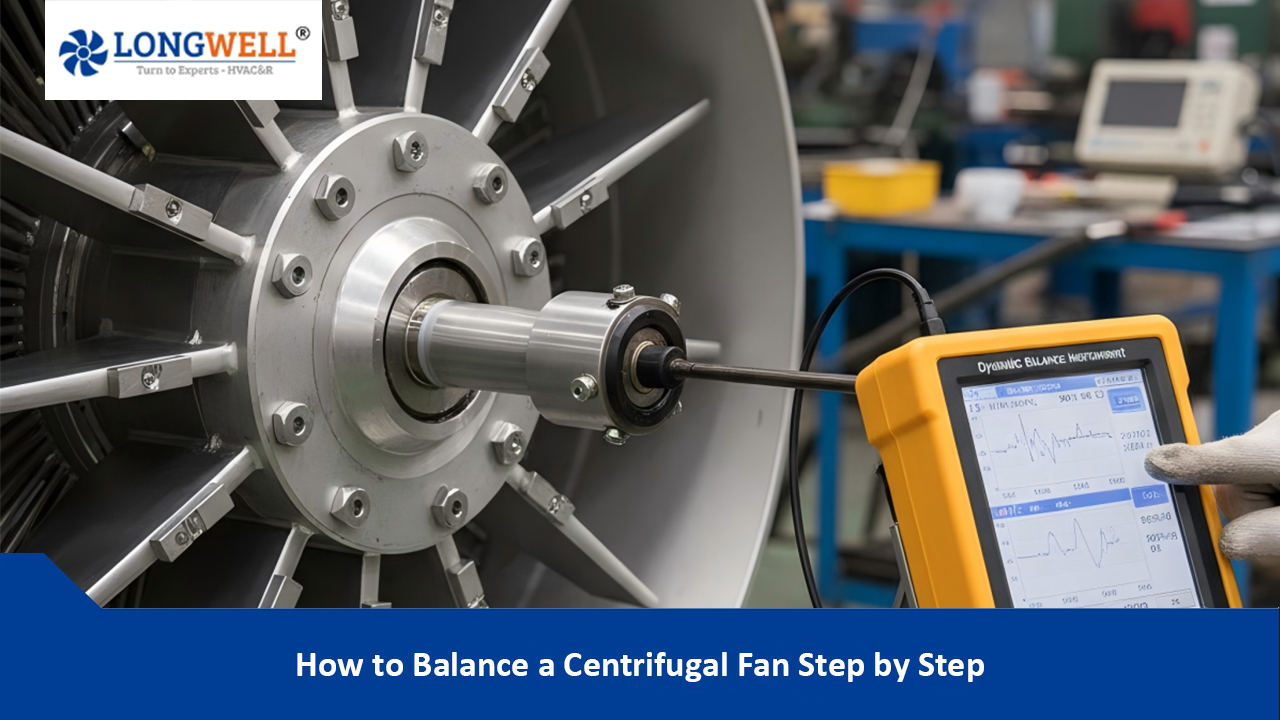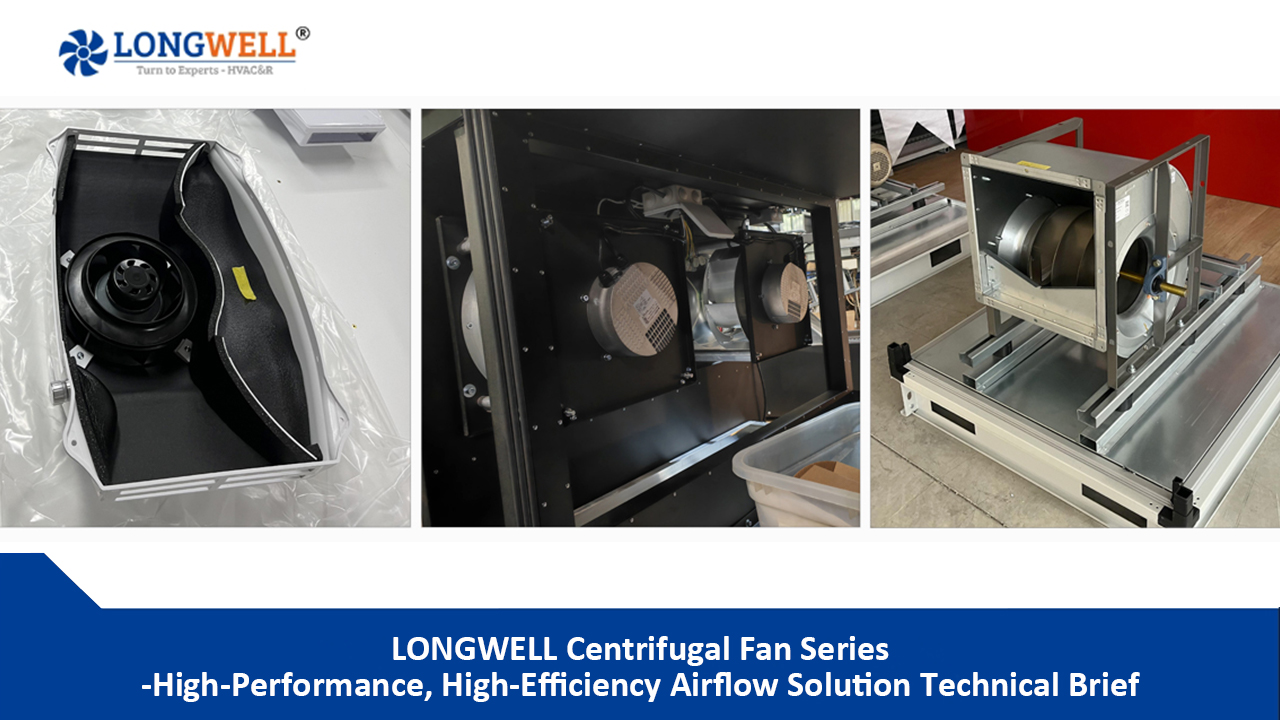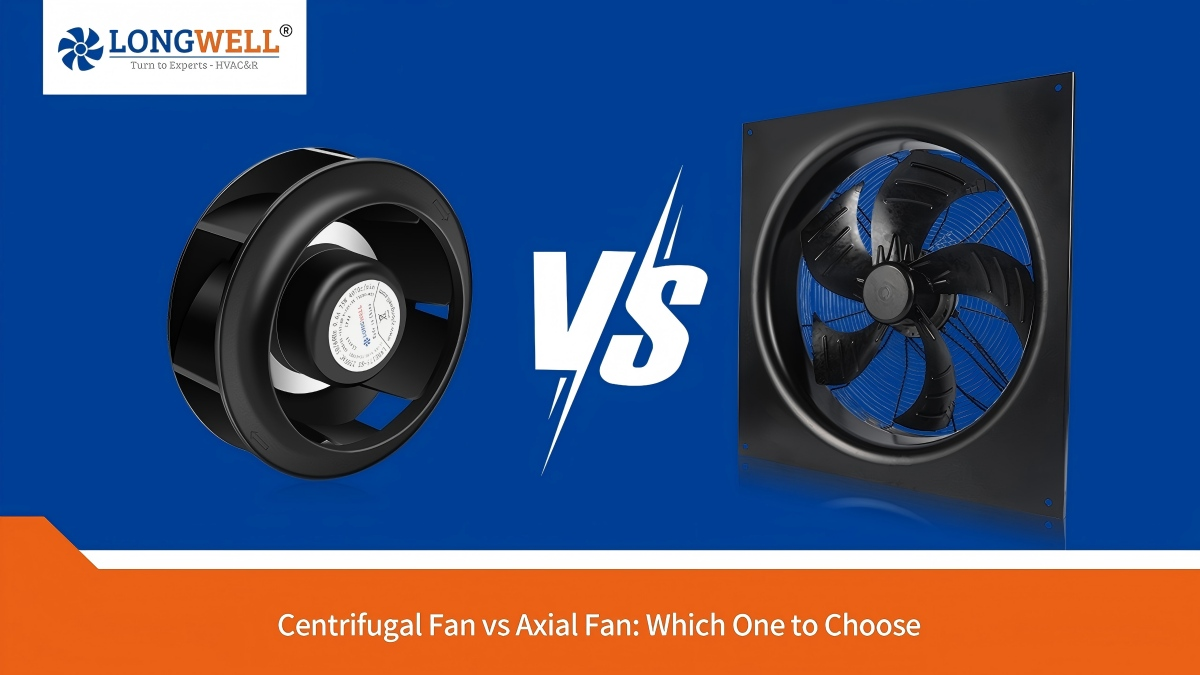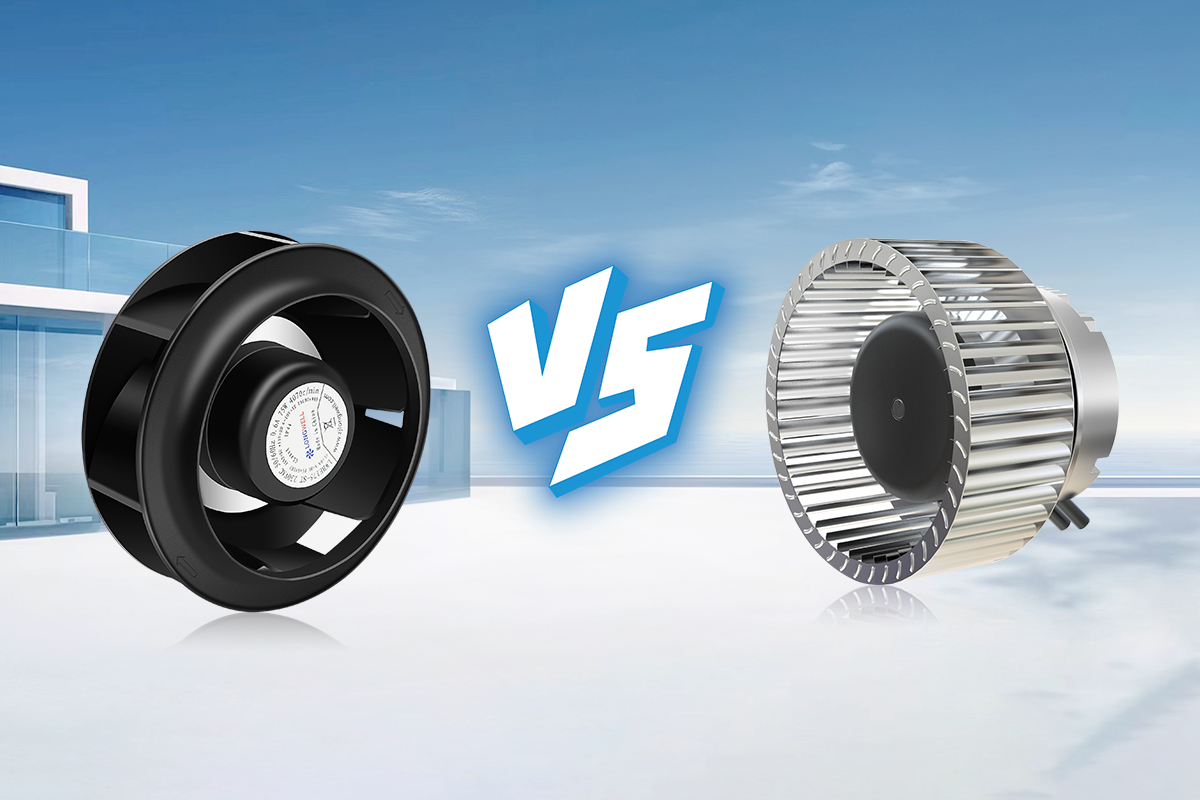
Introduction
Centrifugal fans are very important in industries, businesses, and homes where airflow matters. These fans have an impeller that pulls air in and pushes it out to the side. This design creates a clear air stream. The fans change spinning energy into movement energy, which helps create airflow. There are two main types of centrifugal fans: forward curved (FC) fans and backward curved (BC) fans. Each type has its own benefits and features. To find the best type of centrifugal fan for your needs, it’s important to understand the differences between them.
What Are Forward Curved (FC) and Backward Curved (BC) Fans?
Forward curved (FC) fans and backward curved (BC) fans are two types of centrifugal fans used in HVAC systems. FC fans have blades that curve in the same direction as they spin. In contrast, BC fans have blades that curve in the opposite direction. Each type offers unique benefits for performance in HVAC systems.
Forward Curved Fans:
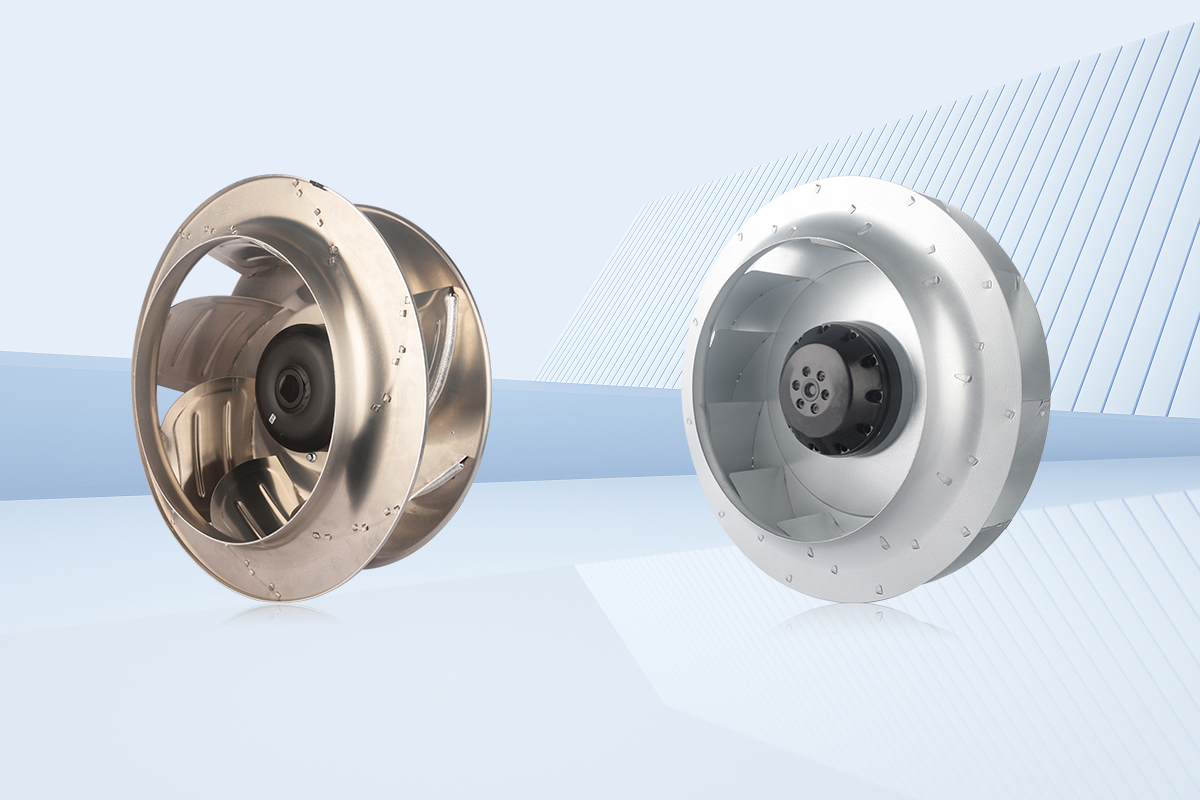
Forward curved fans, or forward curved blowers, have a special design called double inlet blower scroll housing. These fans are made to move a lot of air instead of creating high pressure. This makes them suitable for locations where it is important to move a lot of air, but high pressure is not as crucial.
One good thing about these fans is their small size. They can fit into different systems, even in tight places where bigger fans can’t go. Because of this, they are often used in HVAC systems, air handling units, and to cool electronics that have space constraints.
Forward curved fans have some disadvantages. They are not as efficient when dealing with higher pressures. This means they are not the best choice for places that need a high pressure difference. They also have a harder time with dust and debris than backward curved fans. This can affect their performance and shorten their lifespan in tough environments.
Backward Curved Fans:
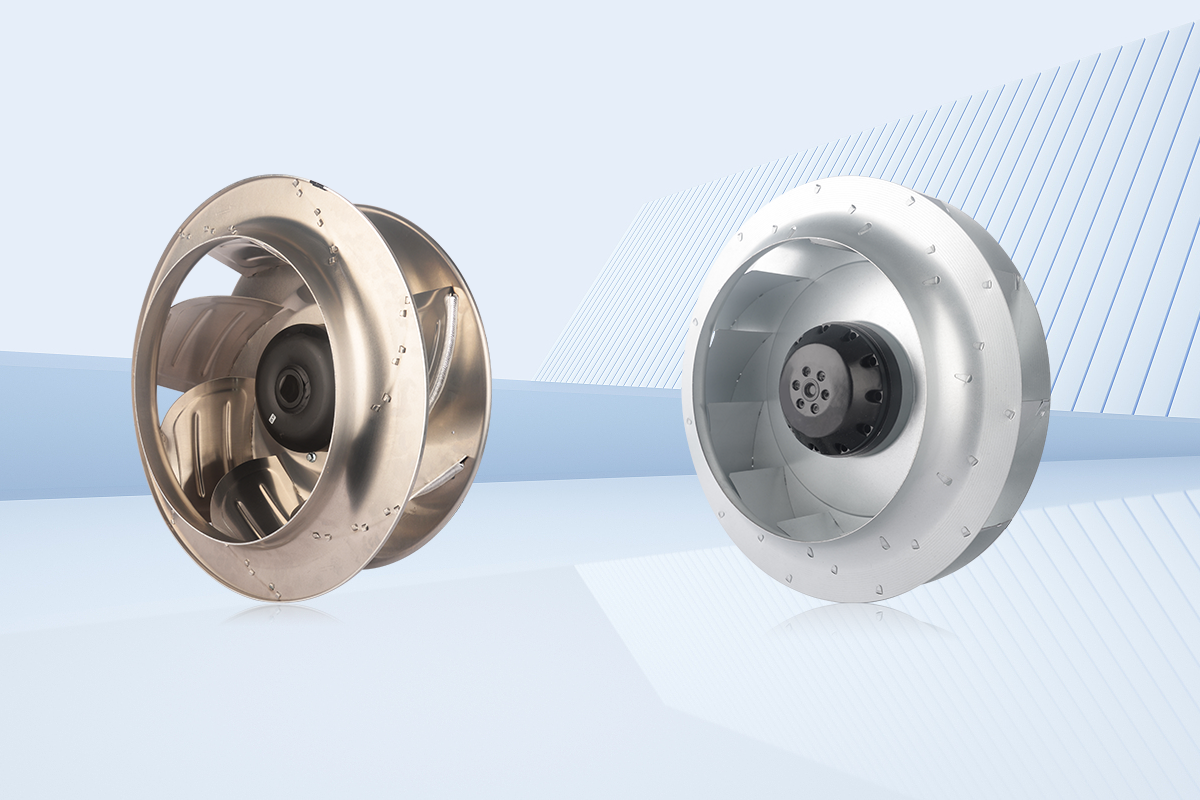
The backward curved fan is a well-liked option because it performs better. It is strong and dependable for several industrial and commercial tasks. This design allows it to manage higher static pressures more efficiently than forward curved fans. This is important when the fan faces a lot of resistance in the ductwork or system.
Backward curved fans use less energy, especially under high pressure. Their smooth shape helps reduce energy loss from turbulence. This results in lower costs over time. They are the best choice for being good for the environment.
Backward curved fans do have some downsides. They typically cost more to produce than forward curve fans. This increased cost is due to the need for larger blades and a more complex housing design. Even though the starting price is higher, these fans can save money on energy and require less maintenance over time. This can help make up for the higher initial cost.
Pros and Cons of Each Fan Type
It is helpful to understand the advantages and disadvantages of forward curved and backward curved fans. Forward curved fans are known for high airflow and lower costs. Their simpler design also means they take up less space. However, they may not perform as well when there are higher pressures.
Backward curved fans are good for saving energy. They are quieter and handle pressure well. But, they can be more expensive initially and require extra space. When picking the right fan, think about the needs of your project and what is most important for it to succeed.
Forward Curved Fans:
Forward curved fans come with a squirrel-cage impeller. They move a large amount of airflow without needing much pressure. Their small size makes it easy for them to fit into existing systems. This is very helpful in HVAC situations where the direction of airflow and fan rotation matters.
Forward curved fans are crucial to know about. As the pressure goes up, their efficiency reduces a lot.
Here are the pros and cons of forward curved fans:
Pros:
- Provides better airflow even when the pressure is low.
- Compact size, ideal for tight spaces.
- Lower initial cost.
- Operates quietly.
Cons:
- When there are higher pressures, it can cause lower efficiency.
- It is not a good option for dirty environments.
- The design of the blades needs regular cleaning.
Backward Curved Fans:
Backward curved fans are a good choice if you want high pressure and energy efficiency. They work well even when there is some resistance in the ducts. These fans can keep high airflow while also giving high static pressure. This is why they are perfect for industries, cleanrooms, and places where air quality and pressure matter.
Another good thing about backward curved fans is that they run quietly. This helps with noise reduction. They are slightly louder than forward curved fans, but they are quieter than many other fan types. Because of this, they are a great choice for places where noise is important.
Pros:
- Energy efficiency is improved.
- It runs quieter than other high-pressure fans.
- The pressure capabilities are strong.
- It does a better job managing dust and debris.
Cons:
- Higher starting cost
- Usually requires more space
- May need expert setup
Applications: Which Fan Suits Your Needs?
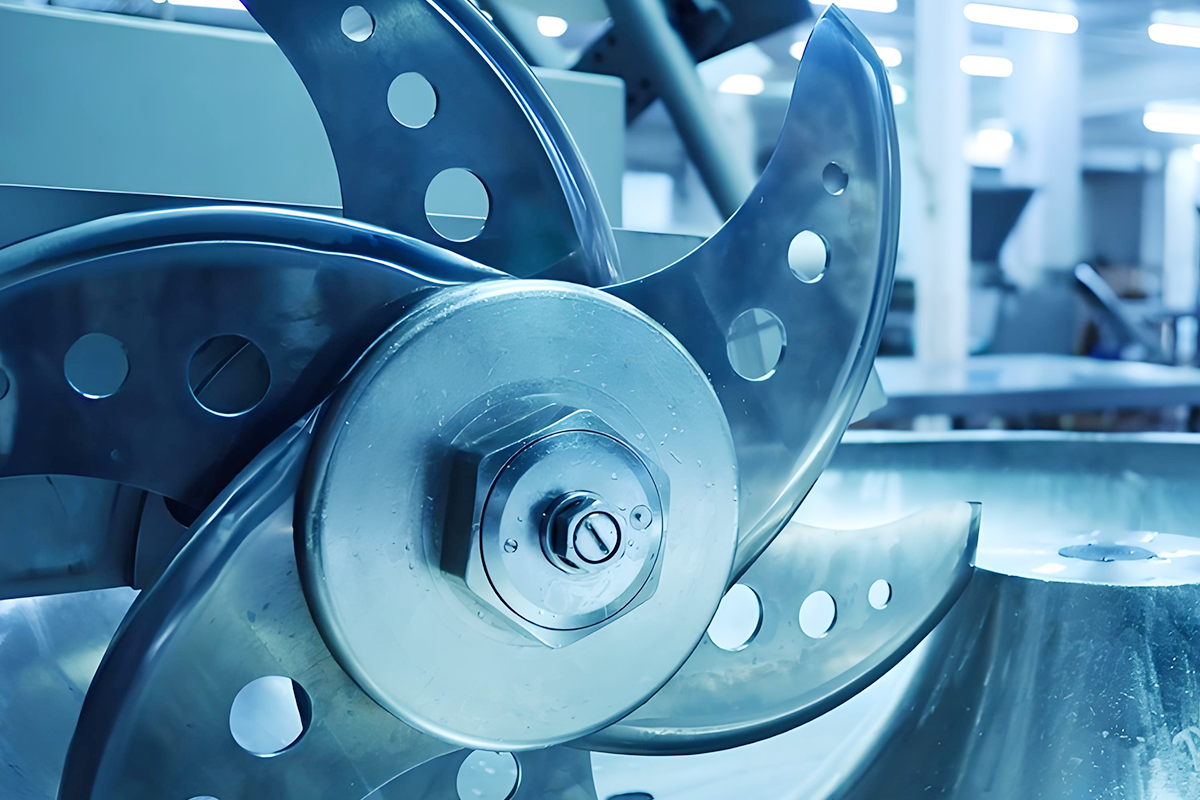
Choosing between forward curved and backward curved fans is important depending on what you need. You need to think about your airflow needs and the pressure required. Consider the space you have and how much you can spend. This will help you pick the best option.
To choose the best option, you need to know the good and bad sides of each choice. Take some time to think about what you need. Getting help from experts can guide you to make a good decision. This will improve the way things work and help the fan last longer.
When to Choose Forward Curved Fans
Forward curved fans are great at moving large volumes of air, even at low pressure. This makes them a smart option for many uses, especially in HVAC systems for homes and businesses. Their compact design works well in the small spaces commonly found in these environments.
When space constraints are important, forward curved fans are a great choice. They are smaller, which makes them easy to install. They can also fit well into existing ductwork. Because of these reasons, many people choose them to upgrade older buildings.
Their ability to move large volumes of air fast makes them great for keeping good airflow. They work well in air conditioning units, air handling units, and normal ventilation systems.
When to Choose Backward Curved Fans
Industries often need fans that can work in tough environments. They must handle high pressure and be efficient. Backward curved fans are made for this purpose. These fans can manage high resistance in duct systems while still performing well under pressure. Their design helps them move air effectively. This makes them a great choice for industrial fans in places like manufacturing plants and processing facilities.
Backward curved fans are a smart option for industrial use. They are strong and last a long time. These fans work well even in tough situations. They can handle high heat, dust, and other issues that might affect other fan types. Their strength makes them reliable and able to keep going for a long time. This means they perform well without needing many breaks.
Backward curved fans are great for factories because they save energy. Their design uses less energy, which is a smart choice. This helpful design can also save you money in the long run.
Case Study
A manufacturing facility wanted to make its ventilation system better. They aimed to let more air flow in and cut down on noise in the workspace. The current system used forward curved fans, but they did not work well and were too loud. This made it difficult for people to work comfortably. After looking at the situation, it was clear that backward curved fans would be a much better option. These fans can create high pressure, use energy efficiently, and reduce noise.
The upgrade changed the old forward curved fans to new backward curved fans. These new fans create a similar airflow. The ductwork was also improved to manage the higher pressure from the new fans.
| Feature | Before (Forward Curved) | After (Backward Curved) |
|---|---|---|
| Airflow (CFM) | 10,000 | 10,000 |
| Static Pressure | 1 in. wg | 3 in. wg |
| Noise Level (dB) | 80 | 75 |
| Energy Consumption (kW) | 10.0 | 8.5 |
The results of the upgrade were significant.
How to Select the Right Fan
Choosing the right centrifugal fan is very important. You can pick either a forward curved fan or a backward curved fan. Start by thinking about the airflow you need for your project. This is often measured in cubic feet per minute (CFM). Knowing how much air the fan needs to move will help you decide on the best choice.
Next, think about the static pressure needs for your system. Static pressure is measured in inches of water gauge (in. wg). It tells you how much force the fan needs to push air through the ducts. You should also check the size limits in your area, the noise level you can tolerate, and your budget. Talking with HVAC engineers or fan experts can help you make better choices. This way, you can pick the best fan for your needs.
Maintenance and Lifespan
Taking care of your centrifugal fan is very important. This applies to both forward curved and backward curved fans. Regular maintenance allows the fan to work better and last longer. Here are some tasks you should do regularly:
- Check the fan blades for any damage or dust.
- Clean the blades and the area around them.
- Put oil on the bearings if needed.
- Look at the fan belt for any wear. Make sure it is tight enough.
The life of a good centrifugal fan can be influenced by several factors. It mainly depends on how often you use it, where you use it, and the quality of its build. If you take care of your fan, it can last for many years. It’s important to follow the maintenance plan from the maker. If you see any problems, fix them right away. This can help avoid small issues turning into expensive repairs or needing a new fan.
Conclusion
In conclusion, it is important to know the difference between forward curved and backward curved fans. Each fan has its own pros and cons. This affects their suitability for different tasks. When choosing the right fan for optimal performance, think about its efficiency, maintenance, and lifespan. Your choice can impact how well your operations run. By understanding your needs and considering factors like airflow and the environment, you can make a good choice. If you need help finding the perfect fan, feel free to contact our experts for advice.
Frequently Asked Questions
Can I retrofit a forward curved fan with backward curved blades?
You cannot use backward curved blades with a forward curved fan. Each fan type has its own special designs for the impeller and hub. If you want to switch to a different type, you must change the entire impeller and possibly the housing too. It’s usually easier and cheaper to replace the whole fan unit instead.
Which fan is better for dusty environments?
Backward curved blowers are great for dusty places. Their blades create less turbulence. This means they don’t pick up dust as much, which is different from forward curved fans. Forward curved fans need more cleaning.
Are backward curved fans always more efficient?
Backward curved fans perform better when the pressures are higher. Still, they do not work at full efficiency. Things like airflow, pressure needs, fan design, and meeting AMCA standards can affect how well they use energy.
Are there specific maintenance considerations for forward curved fans?
Forward curved fans have a special blade shape and a scroll housing. Because of this design, they need to be cleaned often. If you let dirt build up, it can cause problems. This dust can hurt how well they work, especially in HVAC systems.
Which type of fan is more energy-efficient in long-term use?
Backward curved fans can save more energy compared to forward curved fans. However, looking at energy efficiency over a long time can be complex. Several factors can influence this. These include the size of the fan, the type of motor used—DC motors tend to be more efficient than AC motors—and whether there are any axial fans in the system.
